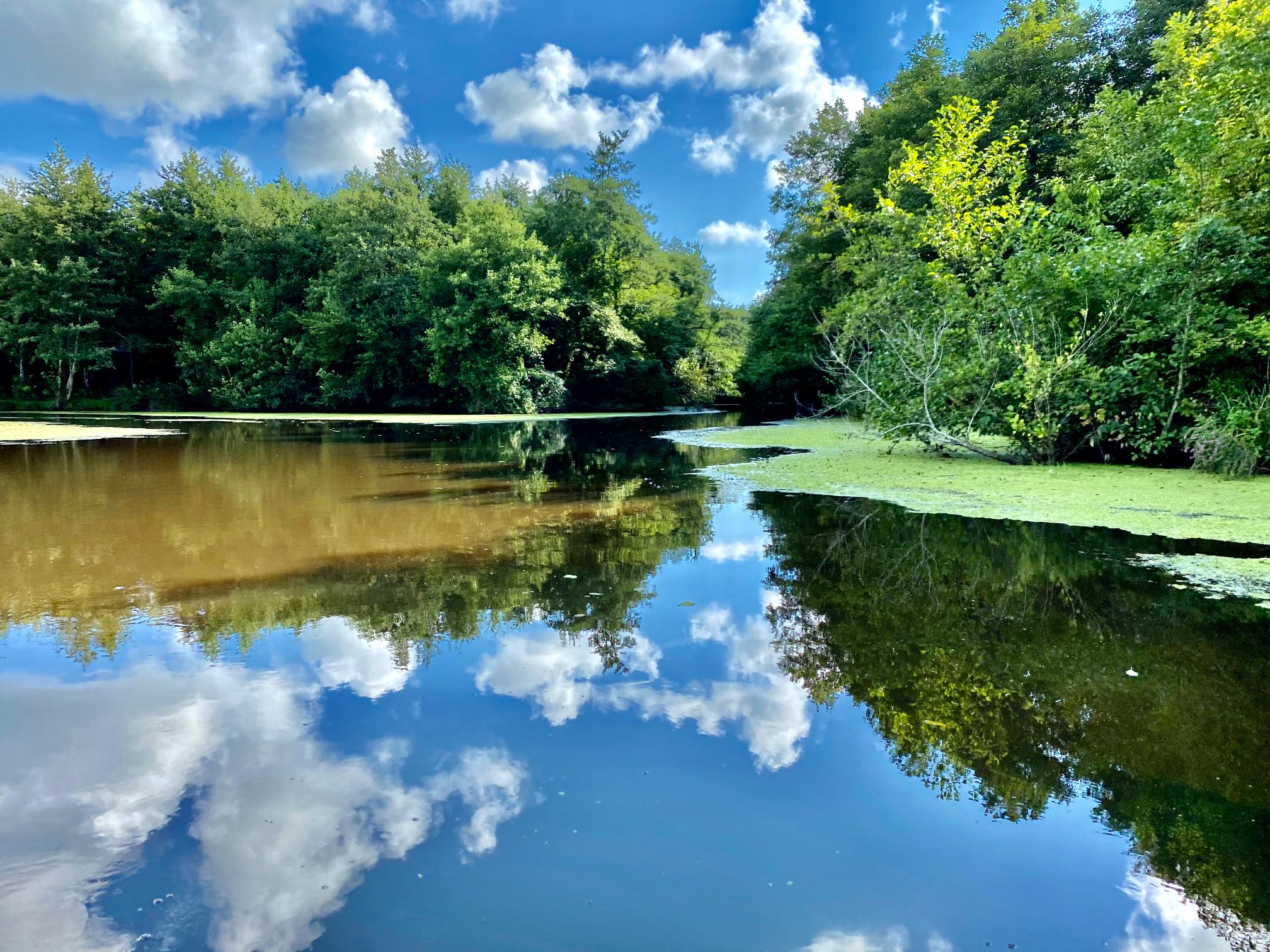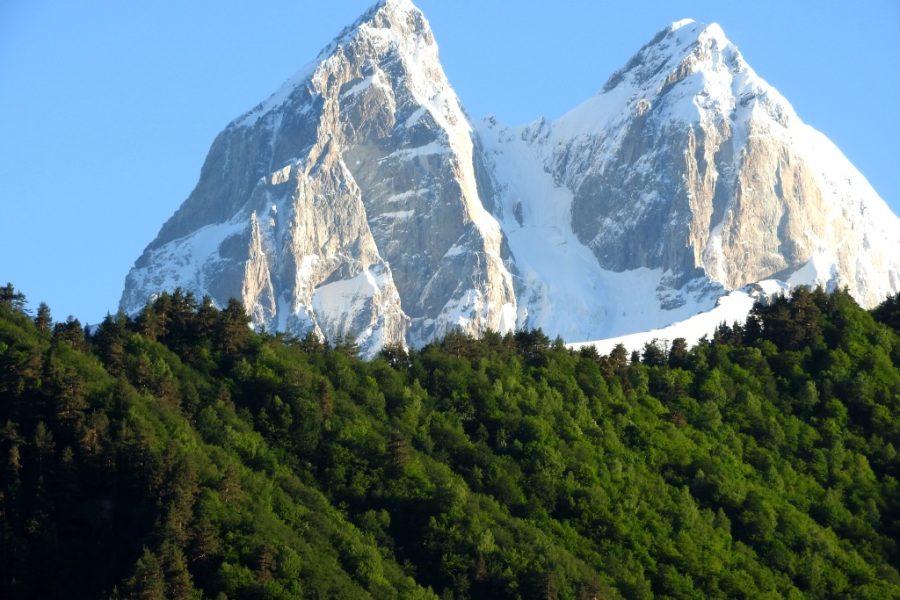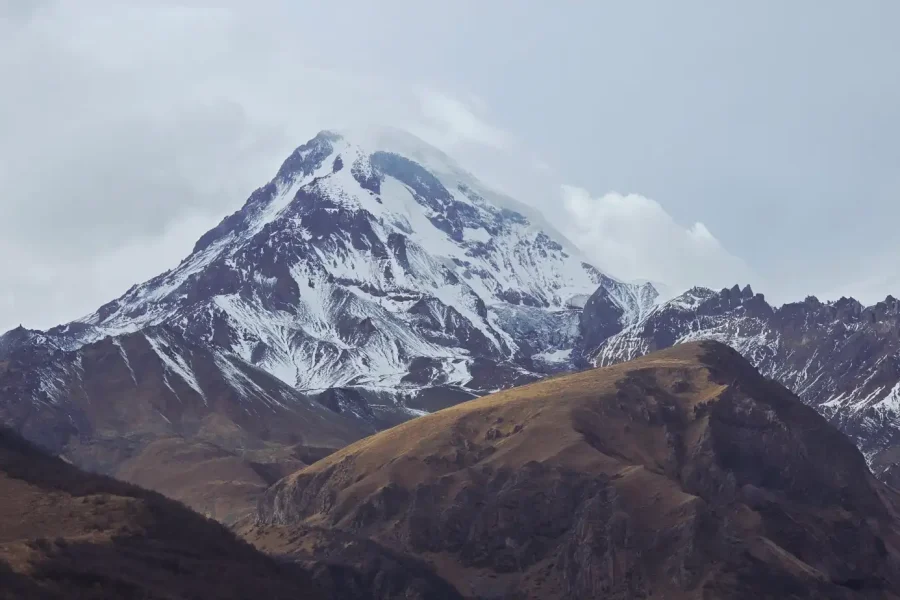Kolkheti National Park: Old Stories, Wetlands, and Birds
Kolkheti National Park is a one-of-a-kind watery paradise on the Black Sea coast of Georgia. This park protects a large area of unique wetlands, such as the huge Lake Paliastomi, slow-moving rivers, marshes, and rare floodplain forests. It is close to the port city of Poti. In ancient Greek myths like Jason and the Golden Fleece, this area was known as Colchis. The park protects the natural treasures of this old land today.
The main goal of Kolkheti National Park, which was founded in 1998, is to protect its incredibly rich and diverse wetland ecosystems. These wetlands are very important, especially for birds. Kolkheti is a very important place for millions of birds to rest and eat on their long migrations between Europe, Asia, and Africa. This is why the park is known around the world as a Ramsar Wetland of International Importance and an Important Bird Area (IBA). It is also part of the UNESCO World Heritage site “Colchic Rainforests and Wetlands,” which shows how important it is to the world.
Lake Paliastomi, a big, shallow lake that used to be directly connected to the Black Sea like a bay or lagoon, is the park’s main feature. There are wet meadows, swamps full of reeds, and one-of-a-kind forests around the lake that can handle flooding from time to time. The park also has a part of the Black Sea coast and marine waters that protect coastal sand dunes and homes for marine animals, like dolphins.
Kolkheti National Park is not like other mountain parks. The best way to see how beautiful it is is by boat. You can take guided boat trips across Lake Paliastomi or along winding rivers like the Pichori from the visitor center near Poti. As you glide through the calm waters, you can take in the beautiful scenery, enjoy the peacefulness of the wetlands, and, most importantly, watch birds! There are more than 190 types of birds here, including pelicans, cormorants, herons, egrets, eagles, and huge flocks of ducks and geese (especially in the winter and when they are migrating). It’s a bird lover’s paradise. People also like to explore by kayak and canoe.
Kolkheti National Park is a great place to learn about the unique nature of Georgia’s coastal wetlands, see amazing birds, and touch the history of ancient Colchis, all while helping to protect this precious environment.
Basic ID
Official Name:
Kolkheti National Park (კოლხეთის ეროვნული პარკი).
Type of Protected Area:
This is a national park (IUCN Category II). Safeguards natural areas of national importance, facilitating environmentally sustainable education and recreation.
Established:
1998, based on the earlier Kolkheti State Reserve that was set up in 1947.
Managing Body:
The Agency of Protected Areas (APA) of Georgia is in charge.
Where it is and how to get there
Location:
Georgia, in the Samegrelo-Zemo Svaneti and Guria regions. Includes parts of the municipalities of Zugdidi, Khobi, Senaki, Abasha, and Lanchkhuti. On the coastal plain of the Black Sea.
Map/Coordinates:
About 42°08′ N, 41°43′ E is the center. Includes Lake Paliastomi and the coast. You can get maps from the APA website and the visitor center.
Closest Cities and Towns:
The main access point is Poti, a big port city. Other towns close by are Zugdidi, Senaki, Khobi, and Lanchkhuti. The visitor center is not far from Poti, by Lake Paliastomi.
How to Get There:
To get to Poti, you can drive, take a marshrutka (minibus), a bus, or a train from major cities like Tbilisi, Batumi, or Kutaisi. The roads are paved. To get to the Visitor Center and Boat Tours, take a taxi from the center of Poti to the National Park visitor center and boat station on Lake Paliastomi. It takes about 10 to 15 minutes. Kutaisi (KUT) is the closest airport, about 1 to 1.5 hours away by car. Batumi (BUS) is also close, about 1.5 to 2 hours away by car.
Size and how it looks
Area:
The total area is 44,648 hectares (446.48 km²). This includes: 28,906 ha of land and freshwater. Marine (Black Sea): 15,742 ha.
Topography:
Mostly flat coastal lowland plain with a lot of wetlands (marshes, swamps, peat bogs), Lake Paliastomi, floodplain forests along rivers, and coastal sand dunes. The altitude is very low, mostly between 0 and 10 meters above sea level.
Geology and Important Things:
The coastal plain was made by alluvial deposits from rivers. The large, shallow Lake Paliastomi (a relict lagoon) is one of the most important parts. The Pichori river flows through wetlands, peat bogs (like Imnati bog), coastal dunes, and the marine area.
Hydrology:
Lake Paliastomi and the rivers that flow into it (like Pichori and Kaparchina) are the most important. The Rioni River delta nearby has a big effect on the area. Includes a long strip of Black Sea coast and a lot of wetlands with both fresh and brackish water. Flooding happens every year.
Climate:
The climate is humid subtropical. The winters are mild and very wet, and there is usually no frost. In the summer, it gets hot and humid, and it rains a lot. All year long, high humidity.
Meaning and Purpose
Reason for Designation:
The designation is meant to protect the unique and biodiverse Colchic wetland ecosystems, which include peat bogs and floodplain forests, as well as Lake Paliastomi and the coastal and marine habitats that go with it. To protect the populations of resident and migratory birds, as well as species that are only found in certain places or that have been around for a long time. To support environmentally friendly tourism and education about the environment.
Important Values:
Wetland ecosystems that are important to the whole world. A very important place for millions of migratory water birds. Parts of the one-of-a-kind Colchic floodplain forests. A lot of different kinds of plants and animals. An important resource for fun (birdwatching, boating) and learning. Located in the old land of Colchis. Part of a site that UNESCO has declared a World Heritage Site.
International Recognition:
- The Ramsar Wetland of International Importance is part of the “Wetlands of Central Kolkheti.”
- UNESCO World Heritage Site as part of “Colchic Rainforests and Wetlands.”
- Important Bird Area (IBA).
- Emerald Network Site.
Flora and Fauna Biodiversity
Ecosystems/Habitats:
The Black Sea marine environment, shallow lakes (Paliastomi), freshwater marshes and swamps, peat bogs, Colchic floodplain forests, and coastal sand dunes.
Important Plant Species:
Reeds, rushes, sedges, water lilies, and yellow irises are all plants that grow in wetlands. Alder, Oak, Ash, and Caucasian Wingnut are some of the trees that grow in floodplain forests. Peat bogs are mostly made up of sphagnum mosses. There are certain plants that hold sand together in coastal dunes.
Important Animal Species:
Birds: There are a lot of birds here (more than 194 species). Ducks, geese, swans, coots, the Dalmatian Pelican, the Great White Pelican, the Pygmy Cormorant, the Great Cormorant, and many herons and egrets all stop here to rest and breed. The white-tailed eagle breeds close by. A very important stop for waders and passerines. There are mammals like the golden jackal, the European otter, the wild boar, and the roe deer. Some rare species, like the Jungle Cat, might be there. The Bottlenose Dolphin, Common Dolphin, and Harbour Porpoise are all marine mammals that live in the sea. Catfish, pike-perch, carp, grey mullet, and other fish live in Lake Paliastomi and its rivers. Historically, critically endangered sturgeons used the Rioni River. Amphibians and reptiles include the marsh frog, the common tree frog, the European pond turtle, and the dice snake.
Endangered/Rare Species:
Many of the birds that live in the park are endangered or rare, such as the Dalmatian Pelican and the White-tailed Eagle. The European otter is in danger. Sturgeons are in serious danger of going extinct. The Colchic wetland and floodplain forest habitats are ecosystems that are thought to be weak.
Information for Visitors
Visitor Center:
Yes, it’s near Lake Paliastomi and the city of Poti. Provides details about the park, boat tour reservations, kayak and canoe rentals, exhibits, and maybe even souvenirs. Visit the APA website to find out how to get in touch and when they are open.
Hours and Seasons:
The visitor center is open during normal business hours (see the APA website). The main thing to do is take a boat tour, which usually runs from spring to fall, depending on the weather. The best times to watch birds are during their migrations in the spring (March to May) and the fall (September to November). Winter is also a good time to watch waterfowl.
Fees and permits:
Yes, there are fees to get into the park and use its services. Visitors’ main costs are the fees for boat tours and equipment rentals. Visit the APA website to find out the current prices. It’s best to book boat tours in advance, especially during the busy season.
Trails and Routes:
There aren’t many marked hiking trails because the area is a wetland. Visitors can mostly get to the site through: Boat Tours: The most popular way to see the park is to take a guided tour of Lake Paliastomi and/or the Pichori River. Length varies. Kayaking and canoeing: You can rent boats to explore certain water routes. Birdwatching Towers: You can get to them by boat or maybe by short paths near the visitor center.
Activities:
Activities include boat tours, birdwatching (highly recommended), kayaking, canoeing, sport fishing (requires a permit and strict rules), and environmental education tours.
Accommodation:
No hotels or shelters are directly in the main wetland areas of the park. Most visitors stay in the nearby city of Poti, which has a number of hotels and guesthouses.
Facilities:
a visitor center with restrooms, information, and a booking desk; a boat pier; tour boats; rental kayaks and canoes; birdwatching towers; and information boards. There may be picnic areas near the visitor center.
Advice on Safety:
Boat Safety: Follow the captain or guide’s instructions and wear a life jacket if you need to. Weather: Be ready for sun on open water (wear hats, sunscreen, and sunglasses) or rain and wind. Bad weather could cause tours to be canceled. Insects: Mosquitoes and other bugs can be very common, especially in the summer. Use bug spray. Bring binoculars for the best birdwatching experience. Don’t make noise near where birds live.
Laws and Rules
Code of Conduct:
Be respectful of wildlife, especially birds that are nesting or resting. Stay away and be quiet. Don’t leave trash behind; take it all with you. Do what the staff at the park and the boat guides tell you to do.
Prohibitions:
There may be limits on motorboats that aren’t allowed. You can’t hunt. You need a license to fish, and there are strict rules about when, what kind, how big, and how to do it. It is against the law to bother animals in the wild. You can’t collect plants or animals. Only certain places (if any) are allowed to have fires. You probably need permission to use a drone.
Zoning:
The park has different areas (land, lake, and sea) that may have different rules. Most of the activities that visitors can do are limited to certain boat routes and areas around the visitor center.
Management and Conservation
Managing Body:
The Agency of Protected Areas (APA) is in charge of managing Kolkheti National Park. Park rangers keep an eye on both land and water.
Conservation Efforts:
Conservation efforts include protecting and restoring wetlands. Checking the quality and levels of water. Keeping an eye on bird populations, especially those that migrate and breed. Keeping an eye on illegal hunting and fishing. Taking care of invasive species. Controlling the effects of tourism. Teaching people about the environment and making them more aware of it. Putting in place rules that have to do with UNESCO World Heritage status.
Threats and Problems:
Rivers and other areas around Lake Paliastomi are polluting the water. Fishing and hunting that is against the law and not good for the environment. The effects of drainage and changed river flows on wetland hydrology in the past and present. Invasive species are spreading. Effects of climate change, like rising sea levels and changes in rainfall. Finding a balance between the needs of tourism and conservation.
Culture and History
A short history:
The park protects wetlands in the historical area of Colchis, which was famous in Greek mythology (Argonauts, Golden Fleece). Lake Paliastomi used to be a sea bay. The Kolkheti State Reserve was the first formal protection in 1947. The National Park added a lot more protection in 1998.
Culturally important:
a strong link to the myths and history of ancient Colchis. Poti, a nearby city, is important in history as a port. People have been fishing on Lake Paliastomi the old-fashioned way for a long time. Being part of a UNESCO World Heritage site gives it a lot of cultural and natural value.
Interesting Facts and Unique Features
- On the Black Sea coast, it protects unique Colchic wetlands like peat bogs and floodplain forests.
- There is a big, shallow lake called Lake Paliastomi, which used to be a sea lagoon.
- The UNESCO World Heritage Site “Colchic Rainforests and Wetlands” includes it.
- One of the most important places in Eurasia for water birds to migrate and spend the winter.
- Has a big marine protected area that is home to dolphins.
- It is in the famous old land of Colchis.
- Offers visitors unique experiences centered on birdwatching and boat tours.





Leave a review